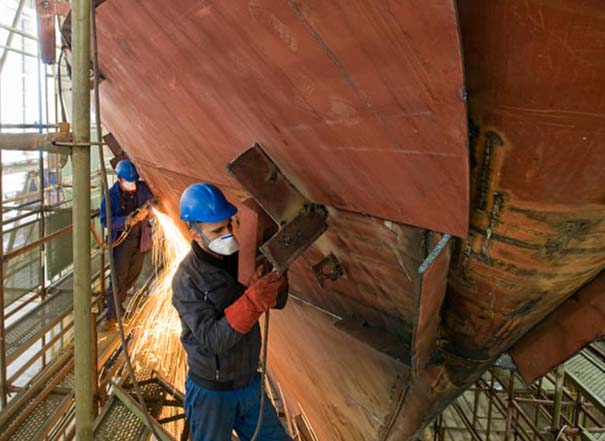Steel Plate for the Oil & Gas Industry – API 5L, ASTM A516 & High-Performance Grades
454Explore the best steel plates for oil and gas pipelines and storage tanks. Learn about API 5L, A516, A387, and more for your high-pressure needs.
View detailsSearch the whole station
When working with ship repair, shipbuilding contractors, or offshore fabrication, the challenge is often not capacity, but sourcing the right marine grade steel plate in small or mixed batches. Projects rarely follow textbook material consumption. Unexpected replacement, sectional repair, and scheduled maintenance can require 1–50 tons, sometimes urgently.
This guide is written for ship repair yards, offshore fabrication workshops, and regional steel distributors who often face small-batch and mixed-size procurement needs. In these environments, project schedules are tight, classification certificates must match batch numbers, and delivery time is often more critical than mill-origin supply.
Sourcing Small Batches of Certified Ship Plate? We Deliver.
CJM specializes in supplying AH36, DH36 & EH36 steel plates with full certification (ABS, LR, BV, DNV) for ship repair and offshore projects, with flexible MOQs and fast turnaround.

For more insights into material selection, see our guide:
👉 Which Steel Plates Are Recommended for Offshore and Shipbuilding Projects.
The main difference is impact test temperature, which relates to toughness performance under colder working conditions.
| Grade | Impact Test Temperature | Typical Usage Scenario |
|---|---|---|
| AH36 steel | 0°C | General hull structure, decks, stiffeners |
| DH36 steel | -20°C | Ships in colder waters, enhanced decks and bulkheads |
| EH36 steel | -40°C | Offshore platforms, deep-sea equipment, high-strength load-bearing parts |
| Grade | C | Mn | Si | P (max) | S (max) | Nb/V/Ti (Microalloy) |
|---|---|---|---|---|---|---|
| AH36 / DH36 / EH36 | ≤0.18 | 0.90–1.60 | 0.10–0.50 | 0.035 | 0.035 | Allowed (for strength & toughness) |
| Grade | Yield Strength (MPa) | Tensile Strength (MPa) | Elongation (%) |
|---|---|---|---|
| AH36 / DH36 / EH36 | ≥355 | 490–620 | ≥21 |
| Thickness | Width | Length | Supply Notes |
|---|---|---|---|
| 6–50mm | 1500–3200mm | 6000–12000mm | Typical available specifications, mixed sizes allowed |

Shipbuilding plate should match the required classification standard:
| Classification | Common Regions / Uses |
|---|---|
| ABS | Global commercial and cargo fleets |
| LR / BV | Europe, Africa, Middle East marine markets |
| DNV | Offshore engineering and Northern Europe operations |
If working on classed ship parts, the certificate must match the steel grade and heat number used.
| Steel Grade | Comparable Materials | Replaceability Notes |
|---|---|---|
| AH36 | Q345 / S355 | Can be substituted in non-classed general marine fabrication |
| DH36 / EH36 | Higher notch toughness variants | Must follow ship classification requirements; matching certificate is critical |
If the steel forms part of a class-inspected structure, do not substitute without classification approval.
When choosing among AH36, DH36, and EH36 steel, consider:
Even small quantity supply must still meet the traceability and certification required for marine work.
If you are working with:
We can support 1–50 ton flexible MOQ, ABS / LR / BV / DNV certification, and cut-to-size processing suitable for urgent and mixed-size delivery.
WHY CJM:
WhatsApp: +86 181 9190 6640
Email: info@cjmstainlesssteel.com
Explore the best steel plates for oil and gas pipelines and storage tanks. Learn about API 5L, A516, A387, and more for your high-pressure needs.
View detailsCompare tinplate sheet and tin-free steel (TFS) for food cans, lids, and decorative packaging. ind the best material for your project with CJM.
View detailsComprehensive guide on U Channel Steel: standard sizes, materials, price factors, and applications for distributors & construction projects worldwide.
View detailsDetailed 4140 steel technical information including chemical composition, mechanical properties, equivalent standards, machining, and welding guidelines.
View details
HelloPlease log in